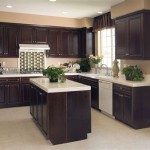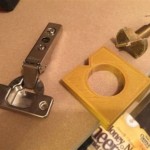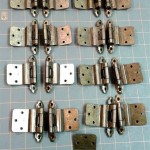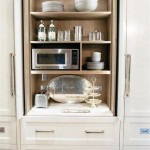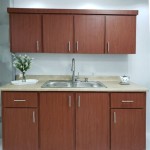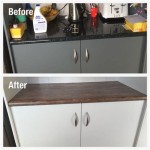Glazing Wood Kitchen Cabinets: A Comprehensive Guide
Glazing wood kitchen cabinets adds a touch of sophistication and elegance to your kitchen. The process involves applying a thin layer of glaze over the cabinets, which enhances the wood's natural beauty and protects it from wear and tear. Here's a comprehensive guide on the essential aspects of glazing wood kitchen cabinets:
Choosing the Right Glaze
The type of glaze you choose will significantly impact the final look of your cabinets. There are two main types of glazes:
- Oil-based glazes: These glazes are more durable and provide a richer, more antique finish.
- Water-based glazes: These glazes are easier to apply and clean up, but they may not be as durable.
Consider the desired finish and the amount of wear and tear your cabinets will receive when selecting a glaze.
Preparing the Cabinets
Before glazing, the cabinets must be properly prepared. This involves cleaning them thoroughly with a degreaser and sanding them lightly to remove any imperfections. Filling any holes or gaps with wood filler will also help create a smooth surface for the glaze.
Applying the Glaze
Applying the glaze requires patience and precision. Use a clean brush or sponge to apply a thin, even coat of glaze, working in the direction of the wood grain. Allow the glaze to dry slightly before wiping off any excess with a clean cloth. Repeat this process until you achieve the desired opacity and color.
Protecting the Glaze
Once the glaze is dry, it needs to be protected from wear and tear. Apply a clear finish, such as polyurethane or lacquer, to seal the glaze and enhance its durability. Allow the finish to dry completely before using the cabinets.
Tips for Achieving a Professional Finish
Here are some tips for achieving a professional-looking finish:
- Use high-quality materials, including the glaze, finish, and brushes.
- Test the glaze on an inconspicuous area before applying it to the entire cabinet.
- Apply the glaze in thin, even coats to avoid streaks or runs.
- Allow each coat of glaze and finish to dry completely before moving on to the next step.
- Protect the glazed surface from dust and debris while drying.
Benefits of Glazing Wood Kitchen Cabinets
Glazing wood kitchen cabinets offers several advantages:
- Enhanced beauty: Glazing adds depth and character to wood cabinets, highlighting their natural grain and texture.
- Protection: The glaze forms a protective layer over the wood, shielding it from moisture, stains, and wear.
- Customization: Glazing allows you to customize the color and finish of your cabinets, creating a unique look that complements your kitchen décor.
- Increased value: Glazed cabinets can increase the value of your home, as they add a touch of sophistication and elegance.
Maintenance and Care
Glazed wood kitchen cabinets require minimal maintenance. Simply clean them with a damp cloth and avoid using harsh chemicals or abrasive cleaners. Over time, the glaze may fade or become dull. To restore its luster, apply a new coat of glaze and finish.

Glazed Kitchen Cabinets How To Glaze Best Colors
:strip_icc()/101952552-cae61875eb174af48d7ce7482b45bc9d.jpg?strip=all)
Wood Cabinet Ideas To Consider For Your Kitchen Remodel

How To Glaze Cabinets With Gel Stain Adventures Of A Diy Mom

How To Glaze Kitchen Cabinets Diyer S Guide Bob Vila

Solid Wood Glass Door Kitchen Cabinet With Blum Hardware China Kitcen Design Made In Com

How To Glaze Kitchen Cabinets Diyer S Guide Bob Vila

Raised Panel Kitchen Cabinets Rta Cabinet Depot

Raised Panel Kitchen Cabinets Rta Cabinet Depot

How To Glaze Kitchen Cabinets

Rescuing And Reviving A Glazed Distressed Kitchen Bella Tucker
Related Posts

